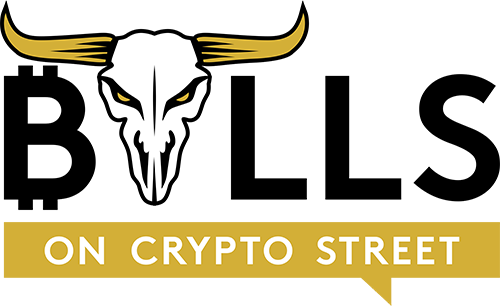How Did Cryptocurrencies Start?
Bitcoin was the first cryptocurrency ever launched. In 2009, a pseudo-anonymous figure under the name Satoshi Nakamoto launched Bitcoin to be a peer to peer payment network. Also, Bitcoin was also designed to be a decentralized currency. Not printed by a government and not distributed by banks, Bitcoin became a mystery to many people.
Since it was developed cryptographically, users began calling it a cryptocurrency. In the years that followed, new cryptocurrencies that imitated Bitcoin’s architecture were built. Coins like litecoin were an imitation of Bitcoin. They were developed to improve on Bitcoin’s blockchain weaknesses.
What’s the blockchain?
The blockchain is a digitized, decentralized public ledger where transactions settled in Bitcoins are recorded. The blockchain is managed by a ton of computer nodes, and Bitcoin transactions are validated by people known as miners.
The blockchain’s biggest advantage is that it offers better security for payments, it is fast, and anyone can access it. By eliminating intermediaries, users could send payments faster. However, Bitcoin’s blockchain had weaknesses that can be credited for helping lead to the development of new networks:
- The process of verifying a Bitcoin transaction is time-consuming- it takes an average of 10 minutes to verify a transaction before it is added to the blockchain.
- High transaction fee- because Bitcoin stores transaction data in small blocks (1MB), it takes longer to process payments. Users are forced to pay higher to have their payment verified faster.
Most cryptocurrency networks launched after Bitcoin developed blockchains that facilitated quicker payments. The new solutions were also supposed to be cheaper. With time, new blockchains were developed that provided specialized solutions. Ripple, for example, is mainly suited for financial institutions. Monero helps settle payments in a completely anonymous manner.
What is a token?
While coins are used as means of payment or units of value, tokens are used as coins within a blockchain platform. Tokens may hold value just like Bitcoin, but they can’t buy any product in the real world. Instead, tokens are mostly used to buy services within the network that created them.
In an example, a startup may create tokens that will be used to buy virtual goods and services in their blockchain platform. These tokens are limited in supply and, therefore, can increase in value. They can also be listed on exchanges where interested users can buy them. Tokens can be used in a variety of ways, except being means of payment.
What is the difference between Coins and Tokens?
The growth of initial coin offerings (ICOs) has helped one major cryptocurrency grow rapidly: Ethereum. Once predicted to overtake Bitcoin as the most traded cryptocurrency, Ethereum offers a service that enables blockchain developers to build their coins and tokens.
Definition of a Coin
Regardless of the solutions solved, any digital asset developed by a blockchain network to help users buy goods and services in the real world is a coin. The distinguishing feature of a coin, therefore, is that it can offer similar services to Bitcoin. A coin can buy a cup of coffee where cryptocurrencies are accepted. A coin can be used to buy clothes at a retailer that accepts digital assets. By contrast, a token has limited functions. Read more about coins and their capabilities on, https://www.abitgreedy.com/.
What is an Ethereum Token?
Nowadays almost every token launched by ICOs is attributed to the Ethereum platform. You may have heard about ERC-20 tokens. What are they and what can they do?
Ethereum is the second largest cryptocurrency network based on daily trading volumes. Its success comes from the ingenious platform that provides developers with some of the tools they need to build a token. In exchange, Ethereum expects these developers to only accept ether coins when launching an ICO. Of course, the process is a bit technical and involves Ethereum’s other invention known as smart contracts.
A smart contract is like a vending machine. It holds the items you need (snacks and other consumables) and only releases the items after you make a payment. On the blockchain technology, smart contracts are a set of trustless commands that help you settle a payment, risk-free without having an intermediary to hold the item of value for you.
Before describing ether tokens any further, note that:
- Ethereum or ETH refers to the cryptocurrency.
- The Ethereum platform is an ecosystem where developers can build their tokens.
- Smart contracts make completing transactions with Ethereum safe and conflict-free.
- Developers can build decentralized applications on the Ethereum ecosystem (DAPPS).
Essentially, decentralized applications are like websites that are on the Internet. They are built to provide different services. Some Ethereum tokens, for example, are used to buy tickets in online casinos. Some are used as coupons redeemable in companies that have partnered with the decentralized application. Learn more about how Ethereum tokens are built here.
Types of Tokens
One of the distinguishing features of tokens is that they can be built to solve several problems. Here are the main types of tokens:
#1: Currency tokens
When a token is referred to as a currency token, it’s not different from any other coin. A currency token is built to settle payments. Bitcoin, for example, is a currency token. Bitcoin holders can buy goods and services wherever it is accepted. Ethereum and litecoin are also currency tokens.
#2: Utility Tokens
Utility tokens are the most popular form of tokens built on the Ethereum platform. They are built to allow holders to access services on the blockchain. Utility tokens can also be called user tokens or app coins. File tokens, built by a platform that allow holders to access cloud storage services, is an example of a utility token.
Asset tokens
Asset tokens are built to represent ownership of a scarce product such as gold. Asset tokens are ideally much less popular than utility tokens. However, there are several ICOs launched with asset tokens.
Token Securities/Equity securities
These tokens hold more value than an average coin. They allow investors to own a share of the company. The tokens are, therefore, similar to stocks. Tokenized securities are very rare as well. Most startups that hold ICOs are never willing to risk giving out a part of their company.
Reward Tokens
Reward tokens are given to a platform’s users for being active or after achieving something that was earlier agreed upon. The popular cryptocurrency network, Stellar provides reward tokens to people who contribute to their Steemit social network.
Conclusion
Knowing the difference between a coin and a token will help you as a blockchain investor. Many ICOs tend to use the two words interchangeably. If you can’t tell the difference between the terms, it’s likely that you will invest in an ICO without the full knowledge of its product. Thank you for reading this article. Stay updated with more intriguing content by visiting this site often.

Kunal Desai is an American day trader (stocks and cryptos) and founder of Bulls on Wall Street and Bulls on Crypto Street, two online trading academies and informational publications. He has been featured in many high profile publications like Inc, Forbes, Buzzfeed, and Fortune. He has spoke at trading and business events all across the World.

